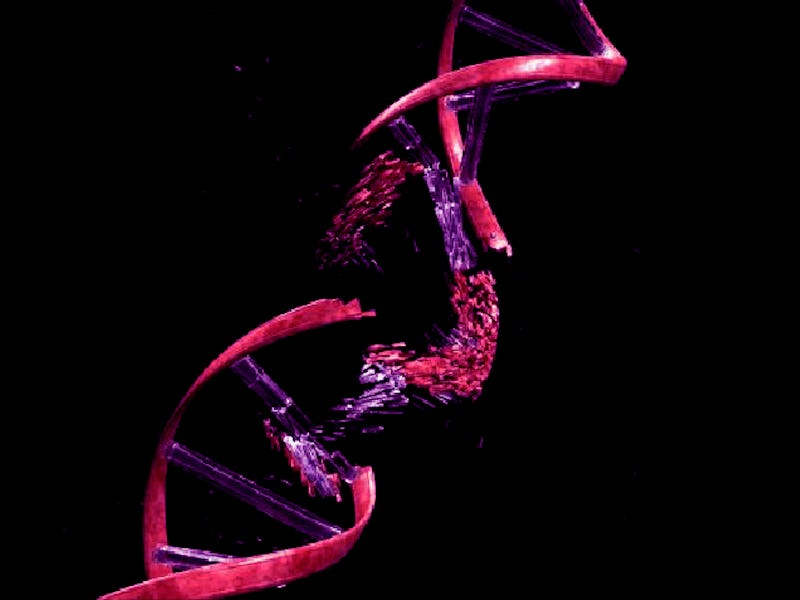Scientists Show Why Genetic Disease Persists, Despite Evolution
It's not as simple as it might seem.

To anyone with a basic understanding of evolution, it should seem puzzling that deadly genetic diseases, passed on from one generation to the next, haven’t eradicated themselves by now. Having one copy of a recessive genetic disease gene may be unnoticeable, but carrying two copies — one from each parent — is definitely deadly, and the people who have them should, in theory, be less likely to reproduce and pass on these genetic mutations.
But congenital conditions, like cystic fibrosis, Tay-Sachs disease, and sickle cell anemia, still persist, and on Thursday, Columbia University scientists attempted to explain why.
In a PLOS Genetics paper, postdoctoral genetics researcher Carlos Eduardo G. Amorim and his colleagues explained why gene mutation rates and disease occurrence don’t balance themselves out — even though they theoretically should. Their explanation is based on a theory explaining the equilibrium between deadly disease and natural “purifying” selection for healthy individuals that’s long been floated in the evolutionary biology community.
“Reasonings derived from [mutation-selection balance] theory have populated scientific research for decades,” Amorim tells Inverse. Now, it seems that the theory has finally found support.
The blood disorder sickle cell anemia is caused by homozygous recessive disease alleles.
The mutation-selection balance theory states, simply, that the number of deleterious genes in a population should balance out the number of genes eliminated by natural selection. To test it, the team compared a real-world data set to theoretical models of the mutation-selection balance, looking specifically at 417 mutations on 32 genes that cause lethal recessive genetic disorders.
Their analysis showed that the actual rates of disease alleles in a population of white Europeans were much higher than mutation-selection balance theory predicted. Rather than take this to mean the theory was fundamentally flawed, however, they saw it as an opportunity to pinpoint all of the factors that interact with this model to cause rates of genetic disease to be higher than predicted.
Six major factors account for the discrepancies, the researchers write.
The first is that scientists make errors in reporting the genetic causes of a disorder, which can occur for any number of reasons, including incorrect annotation in genetic databases or simply attributing a disease to genetic causes without sufficient evidence.
Sometimes scientists make predictions about diseases using an incorrect demographic model. Different genetic diseases occur at unique rates in different populations.
Incorrectly estimating how often mutations arise throw any prediction out of balance because it could make disease-causing allele mutations seem more or less common than they actually are.
Reproductive compensation — when parents have another child after one dies from lethal mutations — could explain variations from predicted disease rates as it complicates the simple idea of selection.
Overdominance of disease alleles sometimes means a person who possesses one mutated allele can be more resistant to certain illnesses.
Lastly, variable disease severity complicates the theoretical models because even people with homozygous alleles might not exhibit signs of disease while they’re alive and can, therefore, survive long enough to pass on their genes.
For all these reasons, reality doesn’t always match up to theory. But theory still does a pretty decent job explaining the population genetics of disease. Mutation-selection balance has long been used for animal populations, and Amorim says it can be applied to humans too.
“Now we know that these assumptions are likely true,” says Amorim, “and thus we can now make better guesses of what frequencies we’d expect to see disease mutations in human populations, and conversely how to use information on allele frequencies (that are now available in many public databases) to learn about the health effects of a given mutation or to search for new disease mutations.”
Amorim says that it was surprising to find that some genes tolerate more mutations than others without causing disease.
“I’m next investigating why some genes harbor more disease mutations than others and why some individuals are resistant to very nasty lethal mutations and others are not.”
If you liked this article, check out this video on how evolution is making genes linked to intelligence more scarce.